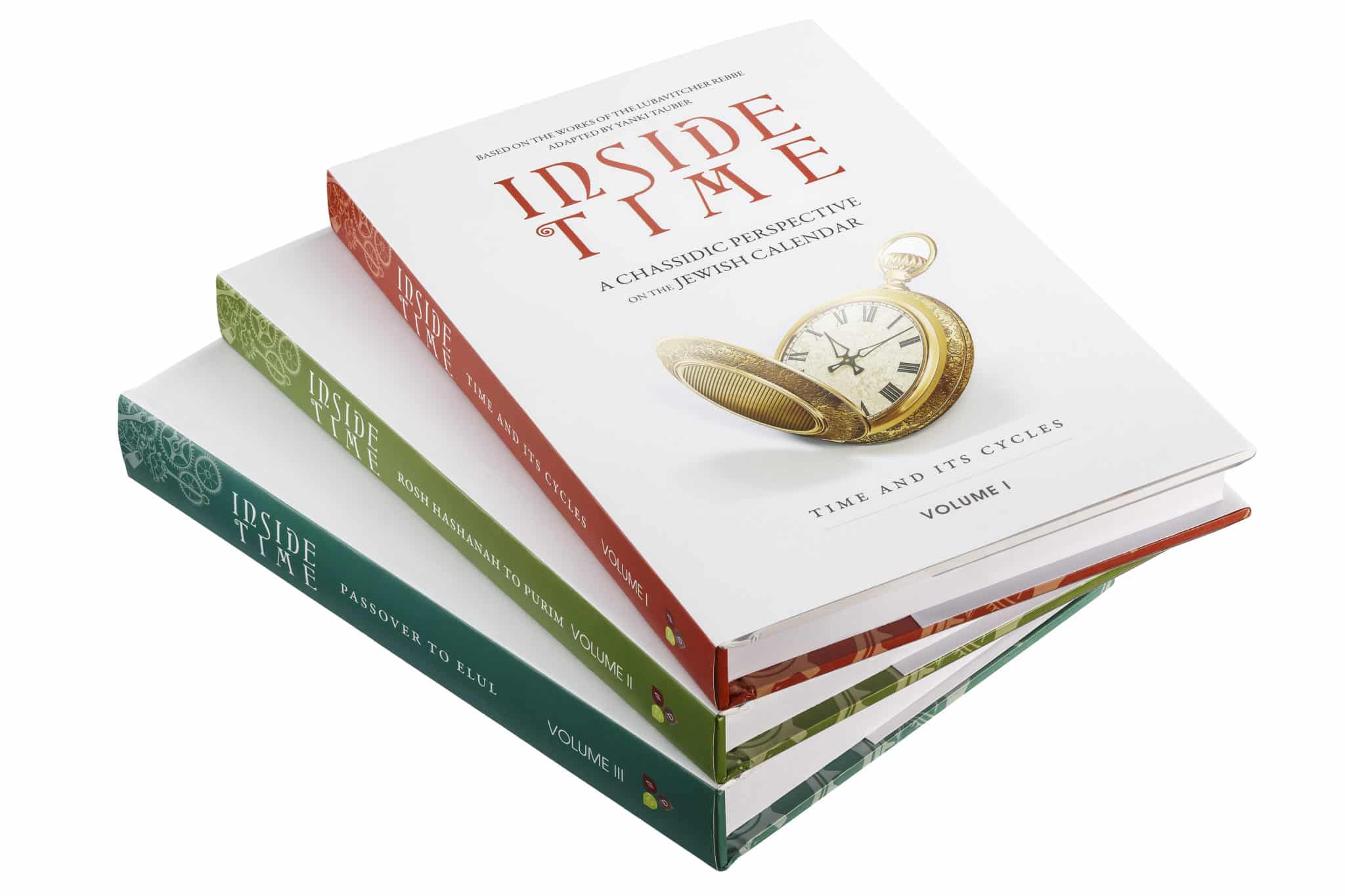Yom haKippurim (the Day of Atonement) is so called because it is a yom k’Purim, “a day like Purim.”
Zohar, Tikkunim, 57b
It would seem that one could hardly find two more dissimilar days in the Jewish calendar. Yom Kippur is the most solemn day of the year. It is a day of soul-searching and repentance; the day on which we connect with the inviolable core of purity within us—with the self that remains forever unsullied by our failings and transgressions—to draw from it atonement for the past and resolve for the future. So it is only natural that Yom Kippur should be a day of unfettered spirituality, a day on which we transcend our very physicality in order to commune with our spiritual essence. The Torah commands us to “afflict ourselves” on Yom Kippur[1]—to deprive the body of food and drink and all physical pleasures. Yom Kippur is the day on which terrestrial man most resembles the celestial angel.
Purim, on the other hand, is the most physical day of the year. It is a day of feasting and drinking—the Talmud goes so far as to state that “a person is obligated to drink on Purim until he does not know the difference between ‘cursed be Haman’ and ‘blessed be Mordechai.’ ”[2] As our sages explain, Purim celebrates the salvation of the Jewish body. There are festivals (such as Chanukah) that remember a time when the Jewish soul was threatened, when our enemies strove to uproot our faith and profane the sanctity of our lives; these are accordingly marked with “spiritual” observances (e.g. lighting the menorah, reciting the Hallel). On Purim, however, it was the Jewish body that was saved—Haman did not plot to assimilate or paganize the Jews, but to physically destroy every Jewish man, woman and child on the face of the earth. Purim is thus celebrated by reading the megillah,[3] lavishing money on the poor, sending gifts of food to friends, eating a sumptuous meal, and drinking oneself to oblivion.
On Yom Kippur we fast and pray, on Purim we party. Yet the Zohar sees the two days as intrinsically similar, going so far as to interpret the name Yom haKippurim (as the Torah calls Yom Kippur) to mean that it is “a day like Purim” (yom k’purim)!
Reason and Lots
And yet, as one delves beneath the surface diversity, similarities emerge. Purim means “lots,” and the festival of Purim is so named after the lots cast by Haman to determine on which day of the year the Jews should be slaughtered, G-d forbid. The casting of lots is also a central theme of Yom Kippur: in one of the most dramatic moments of Yom Kippur service in the Holy Temple, the kohen gadol (high priest) stood between two goats and cast lots to determine which should be offered to G-d and which should carry off the sins of Israel to the desert.
A lot expresses the idea that one has passed beyond the realm of motive and reason. Lots are resorted to when, in the final analysis, there remains no reason or impetus to chose one option over the other, so that the matter must be left to forces that are beyond one’s control and comprehension. Therein lies the significance of the lots cast by the kohen gadol on Yom Kippur. After all is said and done, the lots implied, no man is worthy in the eyes of G-d. We all stand before Him with our faults and iniquities, and by all rational criteria, should be found lacking in His judgment. So we impel ourselves beyond the realm of convention and reason, beyond the pale of merit and fault. We disavow all the accouterments of physical identity—food and drink, earthly pleasures, and our very sense of reason and priority. We cast our lot with G-d, confident that He will respond in kind and relate to us in terms of our quintessential bond to Him rather than by the existential scales of pro and con.
Haman’s lot-casting was his attempt to exploit the supra-existentionality of the divine to an opposite end. The Jewish people, said Haman, might be the pursuers of G-d’s wisdom on earth and the implementors of His commandments, thus meriting His favor and protection. But surely G-d, in essence, is above it all—above our earthly reason and its notions of “virtue” and “deservability,” beyond such concepts as “good” or “evil.” Ultimately, the divine will is as arbitrary as a roll of dice. Why not give it a shot? I might just catch a supernal caprice running in my direction.
As the Talmud relates, “when the lot [cast by Haman] fell on the month of Adar, he greatly rejoiced, saying: ‘The lot has fallen for me upon the month of Moses’ death.’ ”[4] This is what I’ve been saying all along, exulted Haman. Moses might have given Israel the Torah, the document that so endears them to G-d, but Moses, too, is mortal. Moses, too, is part of the physical, rational reality—a reality transcended by the “lot” reality I have accessed. My lots indicate that I have superseded Moses—superseded Israel’s merit in the eyes of G-d.
What Haman failed to realize, adds the Talmud, was that while Adar was the month of Moses’ passing, it was also the month of Moses’ birth. In the final analysis, the import of Haman’s lots was the very opposite of what he had understood. On the physical-existential plane, the lots were saying, there might be variations and fluctuations in G-d’s relationship with His people. At times, they might be more deserving of His protection and blessing; at times, less so.[5] On this level of reality, Moses might even “die.” But G-d’s relationship with His people transcends the fluctuations of the terrestrial reality. Also on the level on which “darkness is as light”[6] and “good” and “evil” are equally insignificant before Him, G-d chooses—for no reason save that such is His choice—the nation of Israel. In the words of the prophet, “Is not Esau a brother to Jacob?, says G-d. But I love Jacob.”[7] Also when reality seems as “arbitrary” as a throw of dice—for the righteous Jacob is no more worthy (for “worthiness” is a moot point) than the wicked Esau—the divine lot inevitably falls with His chosen people.
Thus, the festival of Purim derives its name from the lots cast by Haman. For this is not some incidental detail in the story of Purim but the single event that most expresses what Purim represents.
Does Matter Matter?
Yom Kippur is indeed “a day like Purim”: both are points in physical time that transcend the very laws of physical existence. Points at which we rise above the rational structure of reality and affirm our supra-rational bond with G-d—a bond not touched by the vicissitudes of mortal life. A bond as free of cause and motive as the free-falling lot.
But there is also a significant difference between these two days. On Yom Kippur, our transcendence is expressed by our disavowal of all trappings of physical life. But the very fact that these would “interfere” with the supra-existential nature of the day indicates that we are not utterly free of them. Thus Yom Kippur is only “a day like Purim” (k’purim), for it achieves only a semblance of the essence of Purim.
The ultimate mark of transcendence is when the transcended state is not vanquished or suppressed, but when it itself serves the transcendent end. The miracle of Purim was G-d’s assertion of His supra-existential choice of Israel, yet it was a miracle wholly garbed in nature. No seas split on Purim, no oil burned eightfold its natural capacity. Everything happened quite naturally: Esther’s beauty pleased Achashverosh, and he made her his queen; Mordechai happened to overhear a plot to kill Achashverosh, and years later, the event was remembered by the king on an insomnious night; Esther contrived Haman’s fall from grace in the royal court, had him hanged, and maneuvered Mordechai into his vacated position; and so on. Indeed, G-d’s name is not once mentioned in the Book of Esther! But it is for this very reason that Purim is the greatest of miracles—a miracle in which the natural order is not merely circumvented or superseded, but in which nature itself becomes the instrument of the miraculous.
The same is true on the individual level: the ultimate transcendence of materiality is achieved not by depriving the body and suppressing the physical self, but by transforming the physical into an instrument of the divine will. So “Purim” is the day on which we are our most physical, and at the same time exhibit a self-abnegation to G-d that transcends all dictates and parameters of the physical-rational state—transcending even the axioms “cursed be Haman” and “blessed be Mordechai.”
Yom Kippur is the day that empowers the Jew to rise above the constraints of physicality and rationality. Purim is the day that empowers the Jew to live a physical life that is the vehicle for a supra-physical, supra-rational commitment to G-d.
Based on the Rebbe’s talks on Purim 5718 (1958)[8] and on other occasions. By Yanki Tauber.
[1]. Leviticus 16:31, et al.
[2]. Talmud, Megillah 7b.
[3]. All the festivals are “testimonials”—days that comemorate a pivotal event in our history. Purim is unique in that its laws mandate that the events of the day be inscribed in a scroll (megillah) from which they are read aloud publicly, underscoring the physical nature of the festival: its story is not confined to the realm of thought (i.e. evoked by the observances of the day), or even speech (as in kiddush on Shabbat or the discussion of the Exodus on Passover), but must assume the physical form of parchment and ink (see Likkutei Sichot, vol. XVI, pp. 352-364).
[4]. Talmud, Megillah 13b
[5]. Indeed, the reason that Haman was able to initially threaten the Jewish people was because they had bowed to Nebuchadnezar’s image and had participated in the banquet given by Achashverosh to celebrate the destruction of the Holy Temple (ibid., 12a).
[6]. Psalms 139:12; cf. Job 35:6.
[7]. Malachi 1:2.
[8]. Likkutei Sichot, vol. IV, pp. 1278-1279.








